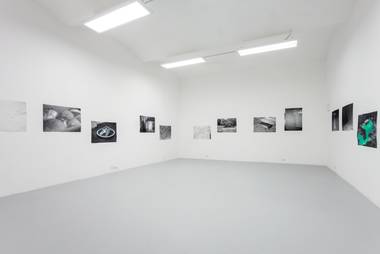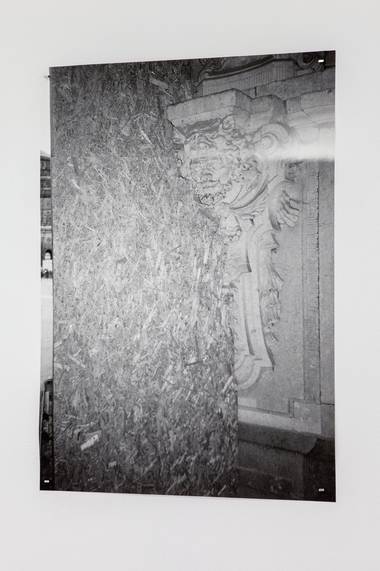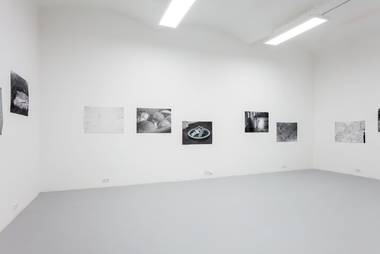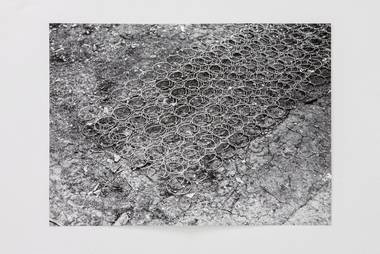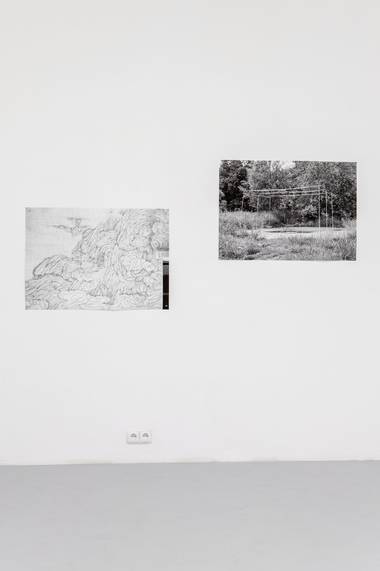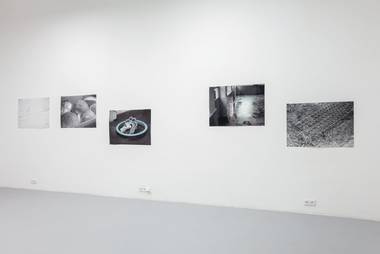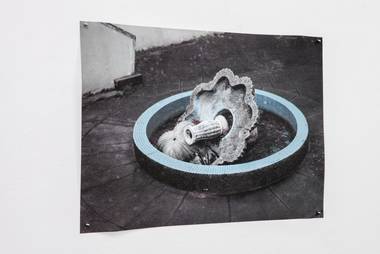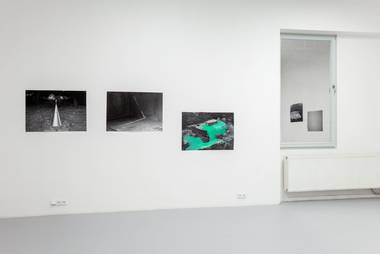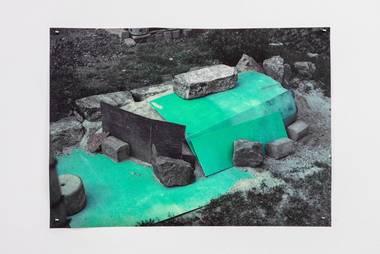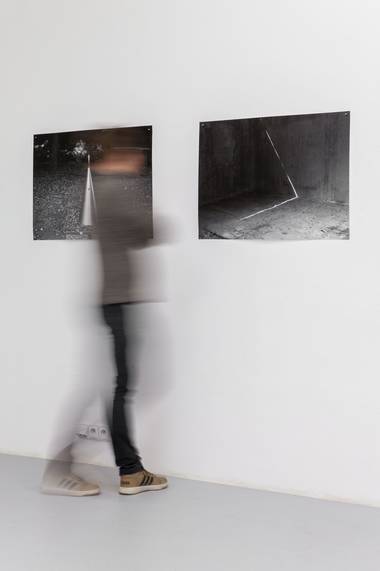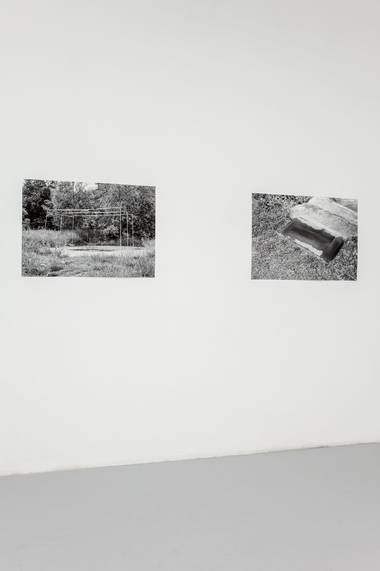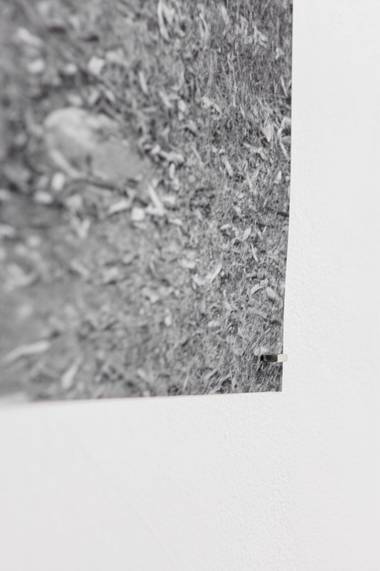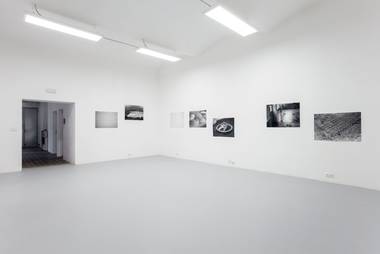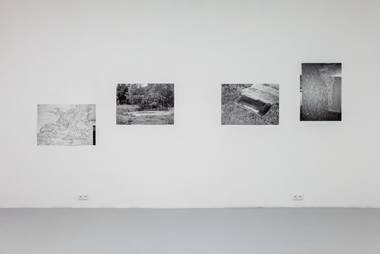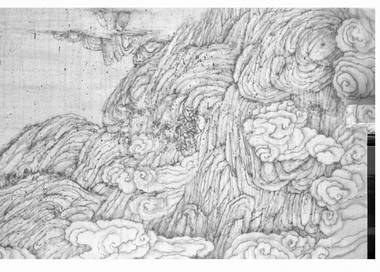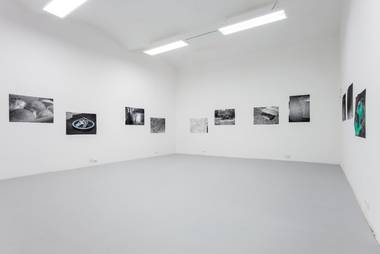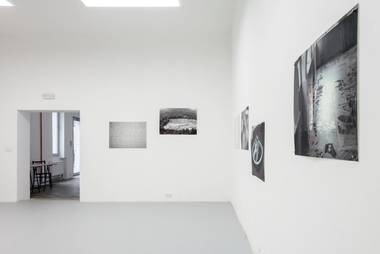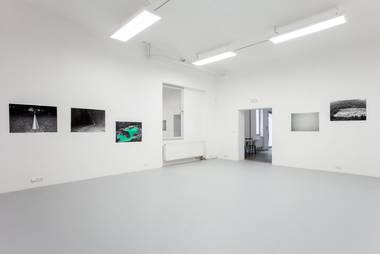Pavel Matoušek: Eye is a Palindrom
9. 12. 2020 – 17. 1. 2021
curator: Gabriela Kotikova
GK: Pavel, you studied at the University of Jan Evangelista in Ústí nad Labem (UJEP) in the Studio of Photography headed by Pavel Baňka, who was in 2016 replaced by Lukáš Jasanský. The two artists have completely different approaches to the medium of photography, was their pedagogical way of heading the studio also very different? It can be hard for some students to get used to a new studio head if they were accepted by someone else, what was it like in your studio?
Certainly, they are two different personalities, but at the same time they’re good friends and hopefully they understand one another’s perception of photographic approaches. With respect to the students, community life was always very important in the studio in Ústí nad Labem. The students lived together, helped each other out and cooperated, and they were able to function independently. At the same time, they always had a lot of freedom in the focus of exhibitions and theses. Last, but not least, Silvia Milková has played a very positive role as the studio’s right hand.
You primarily create black and white photos, but sometimes also coloured ones, which together make up certain relatively compact units, which you have already exhibited at several independent, as well as group exhibitions. To what extent do you use digital technology in your photographs?
The digital path plays its role during processing – I can pull more out of a negative using a scanner and a computer than I can in a darkroom. Sometimes I also use digital negatives – after scanning and editing I transfer the data on photopaper with an enlarger. I try to interconnect both tools to achieve the best plasticity and use to communicate the concept of the exhibition.
One thing that grabbed my attention in your portfolio was that during your studies, you participated in documentary projects in the Netherlands, as well as in India and Kenya. Could you tell me what exactly that was about?
In Northern India, I visited temples and villages where Buddhists from Tibet escape to. There is currently a more authentic culture in the regions of Ladakha and Zanskara than there is in Lhasa and its surroundings. In Kenya and Amsterdam, it was a project that documented families affected by AIDS/HIV on one side, and the development of a vaccination against this disease on the other side.
Your thesis work “Images of Experiences” examines, among other things, today’s reality, which is overpowered by the omnipresent number of images on the Internet and all around us, and the difference between a direct and reproduced experience of reality. The huge impact of visual sensations causes a shallow experience of reality, constant picture taking harms the memory, etc. You followed up this theoretical work with a collection of photographs that directly relate to these theoretical problems – as you yourself wrote, every one of the pictures suggests a certain phenomenon or visual archetype?
Yes, it’s actually a bit of a paradox – to express the abundance of visuality with photographs. But maybe I was just trying to achieve some kind of pacification of “space” and its cultivation, a shift in perception. The theoretical texts were an inspiration for me and the things I thought about, I later “found” in the environment around me.
It is exactly the photograph that has an interesting distinction of seeing an art piece – a photograph in real gallery space and in a document on a computer. It is interesting to what extent the experience from a monitor can be distorting, although it is a medium that appears to be the easiest to reproduce. An online exhibition that we talked about, is similar. We can never replace the actual experience from exhibited artwork…
That is a very complicated thing, but in a painting, for example, its irreplaceable characteristics are described very well – Hapticnost?, aura, format and cohesion with the environment (whether in a gallery or at home on the wall) and many other things. I think the same goes for a photograph, although it often does not appear to be the case due to the ease of reproduction. And on the other hand, it is the conditions for perception on the viewer’s side – the possibility to concentrate and let the thoughts flow…the virtual environment simply does not allow that (yet?).
Your photographs refer to the temporality of things around us, with the help of details and trivialities they attribute importance to something that we do not ordinarily notice, and look at the human life from a further and more sensitive perspective. You are currently exhibiting in the Jeleni Gallery a collection called Eye is a Palindrome. How can one interpret that title and how does it relate to the photographs? In what way is it possible to examine in a photograph, how our personal experiences, memories and emotions influence our perception of fine art?
The exhibition title works with the fact that our perception of reality is significantly influenced by our previous life experiences. Eyesight is our strongest sense and that is why the eye in the title has the function of a metaphor for transferring perception from the inside out. Just like we read palindromic words inside out and they are symmetrical.
(transl. Vanda Krutsky)
The program of the Jeleni Gallery is possible through kind support of Ministry of Culture of the Czech Republic, Prague City Council, State Fund of Culture of the Czech Republic, City District Prague 7, GESTOR – The Union for the Protection of Authorship
Partners: Kostka stav
Media support: ArtMap, jlbjlt.net, UMA: You Make Art
